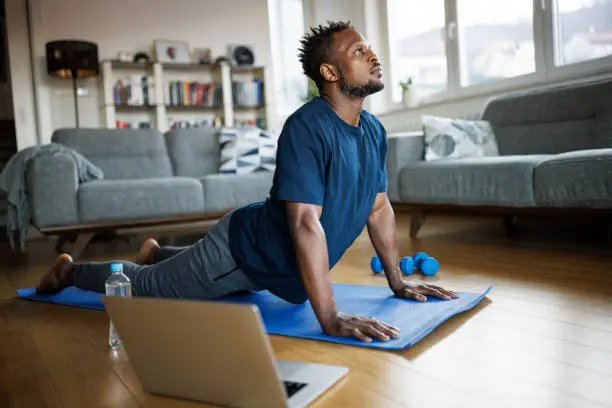Fat Loss or Muscle Gain? It All Starts with Your Body Fat Percentage
Contact partnership@freebeat.ai for guest post/link insertion opportunities.
Embarking on a fitness journey is exciting, but it can also be confusing. Should you be hitting the weights hard to build muscle, or should your focus be on shedding fat? The answer isn’t a one-size-fits-all solution; it’s deeply personal and written in your unique body composition. Forget the number on the scale for a moment and let's talk about a more telling metric: your body fat percentage. Understanding this number is the first step to creating a smarter, more effective plan for transforming your body.
What is Body Fat Percentage and How Do You Measure It?
Simply put, body fat percentage is the proportion of your total body weight that is fat. It's a more accurate indicator of your health and fitness level than Body Mass Index (BMI), which can be misleading as it doesn't distinguish between fat and muscle mass. A bodybuilder and a sedentary individual could have the same BMI but vastly different body compositions.
Measuring your body fat percentage can be done in several ways:
-
Skinfold Calipers: This method involves pinching the skin at various sites to measure the thickness of the subcutaneous fat. It's affordable but requires a skilled person for accuracy.
-
Bioelectrical Impedance Analysis (BIA): Many smart scales use BIA, sending a harmless electrical current through your body. Fat, muscle, and water have different resistance levels, allowing the scale to estimate your body fat percentage. It's convenient for tracking trends at home.
-
DEXA Scan: Considered the gold standard, a Dual-Energy X-ray Absorptiometry scan provides a detailed breakdown of your bone mass, fat mass, and lean muscle mass. It is the most accurate but also the most expensive method.
For most people starting their fitness journey, a BIA smart scale offers a good balance of convenience and consistency for tracking progress.
The "Cut or Bulk" Dilemma: Why High Body Fat Means Fat Loss First
Once you know your body fat percentage, you can make an informed decision about your primary goal. For those with a higher body fat percentage (generally over 25% for men and 32% for women), prioritizing fat loss is almost always the best approach. Trying to build muscle while carrying excess fat is like trying to build a house on an unstable foundation. Here's why:
-
Insulin Sensitivity: High body fat levels are often linked to poor insulin sensitivity. This means your body is less efficient at using nutrients, and more of the calories you consume are likely to be stored as fat rather than used to build muscle.
-
Hormonal Environment: A leaner body composition promotes a more favorable hormonal environment for muscle growth, including higher testosterone levels and better growth hormone response.
-
Aesthetics: Reducing your body fat will reveal the muscle you already have and the new muscle you build, leading to a more defined and toned physique.

A Tailored Approach for Every Body Type
Your starting point dictates your path. Let's look at three common body types and their ideal fitness roadmaps:
-
The Obese Individual: The primary goal is clear: fat loss. A significant caloric deficit is necessary, but it should be achieved through a combination of diet and exercise to preserve as much muscle mass as possible. Low-impact indoor sports are an excellent starting point. This is where home fitness truly shines, providing a private and comfortable space to begin.
-
The "Skinny-Fat" Individual: This person may have a "healthy" weight on the scale but carries little muscle and a higher-than-ideal body fat percentage, often stored around the midsection. The approach here is body recomposition: simultaneously losing fat and building muscle. This can be achieved with a small caloric deficit or eating at maintenance calories while focusing on progressive strength training and cardiovascular workouts.
-
The Skinny Individual: For the naturally thin person looking to bulk up, the focus should be on a caloric surplus and heavy, compound lifting to stimulate muscle growth. Cardiovascular exercise should be incorporated for heart health but kept to a moderate level to avoid burning excess calories.
Incorporating Indoor Cycling into Your Fat Loss Plan
For those in the fat-loss phase, cardiovascular exercise is a powerful tool. Indoor cycling is a fantastic option because it's a low-impact, high-intensity work out that can be done from the comfort of your living room. A session on a work out bike can burn a significant number of calories, improve cardiovascular health, and strengthen your lower body without putting stress on your joints.
You can create a comprehensive routine by combining different types of exercise. For instance, you could follow a high-energy indoor cycling session, perhaps inspired by the dynamic classes of Les Mills, with core-strengthening exercises like bicycle crunches to target your abdominal muscles. This combination of cardio and targeted strength work is a cornerstone of effective home fitness.
The key to long-term success is consistency, and having the right tools at home removes many of the common barriers to exercise. A quality indoor bike, like those from freebeat, can be your trusted partner in your journey towards a leaner, stronger, and healthier you. It's not just about the equipment; it's about creating a sustainable lifestyle where fitness is an integral part of your daily life. So, measure your body fat, set your goal, and start your journey today.






















 0% APR financing for 24-month payments.
0% APR financing for 24-month payments.